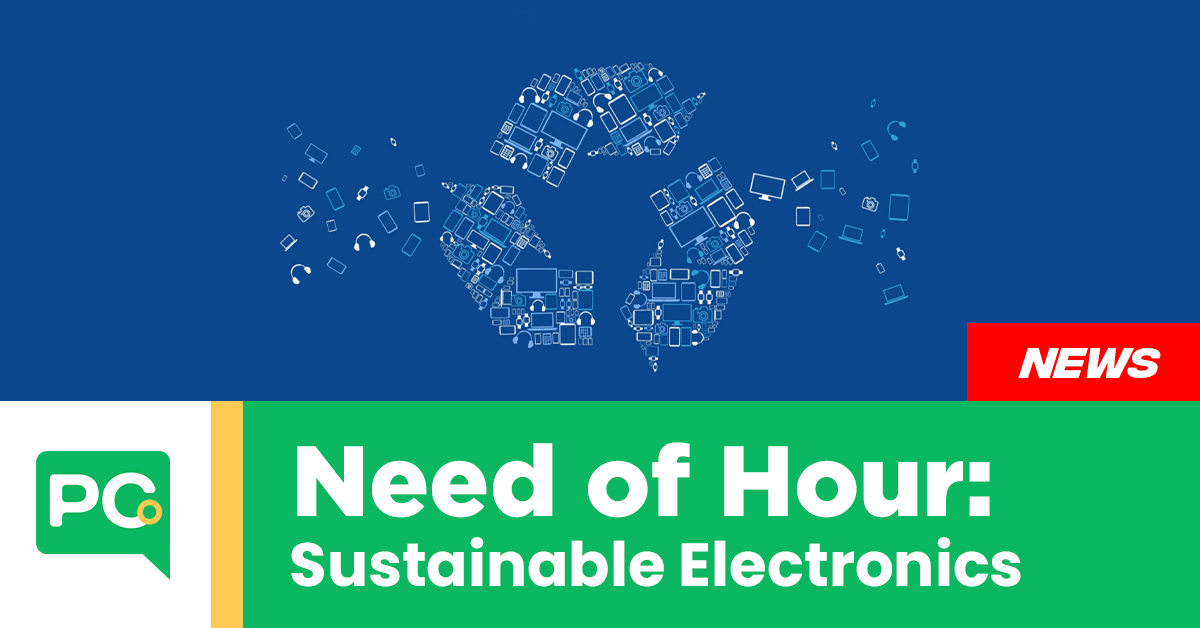The Sustainable Electronics Manufacturing Report
“Sustainable Electronics Manufacturing 2023-2033”, IDTechEx has released a report titled, which explores the key opportunities for sustainable innovation, along with suggesting the most promising new manufacturing approaches within the electronics industry.

Rising Toxins
Toxic chemicals, material waste, safe disposal of hard electronics, fumes from adhesive or burning electronic wastage, scrap disposal and above all, their processing that requires a lot of energy are all major concerns.
A solution is needed to make them safe to dispose of Know about how to recycle PCBs.
Every year, vehicles, households, retailers, and factories become ‘smarter’ with the increased prevalence of Internet of Things (IoT) devices – a market expected to reach billions over the coming decade. Despite the many advantages of smartification, the environmental footprint is high, with the number of devices increasing exponentially.
Is There a Target to Achieve?
Through the COP27 conference, the Semiconductor Climate Consortium was founded. The Consortium of 60 founding members has set a target to reduce greenhouse gas emissions across the supply chain with the collective target of reaching net zero by 2050.
By committing to net zero targets, manufacturers are made to think of ways to re-evaluate their processes and adopt new methods. For example, some are utilizing renewable energy sources to reduce their emissions contributions.
Samsung has already achieved 100% renewable energy for all of its sites in the US and China, with other household name companies following suit, such as Apple, IBM, Intel, and Nokia.
Electronics are Water Guzzlers
It is estimated that 8000 liters of water are consumed in the manufacturing of a single integrated circuit with a single fab using up to 15 million liters per day.
Further, many leading industries are located in water-stressed areas adding to the problem. These include industries in Singapore and Taiwan, as well as parts of the US and China.
As droughts and climate disasters become more frequent and more drastic, water recovery and re-use is expected to de-risk the manufacturing process by supplementing the deficit.
IDTechEx’s report ‘Sustainable Electronics Manufacturing 2023-2033’ discusses the commercial opportunities presented by sustainable innovation.
Sustainability and Profitability can be Clubbed
Environmentalism is often perceived as an obstacle-laden with legislative red tape and burdensome disclosures. However, prioritizing environmentalism keeps the industry ahead of the curve as legislation becomes stricter while positioning individual companies well to benefit from designated ESG investment.
For instance, demonstrating high water conservation rates is excellent for improving public opinion and reputation. Enacting water conservation measures will lead to greater self-sufficiency and reduced costs.
Also, switching to printable or additive methods of PCB manufacturing can lower water consumption by up to 95% – an outcome that could save the sector hundreds of millions of liters of water annually.
Innovating adhesives can significantly contribute as well. This is because component attachment materials, such as solder and electrically conductive adhesives, are also experiencing a period of transformation. New approaches are largely concentrated on reducing the required heat for reflow or curing.
Conclusion
Reducing the carbon footprint of the electronics industry is not only a daunting task but also seems to be very ardent. On one hand well-established manufacturers are reluctant to divert from traditional methods and on the other, the newcomers lack necessary resources and skills to comply with all environmental norms.
IDTechEx’s analysis indicates that by embracing sustainable manufacturing methods, companies can benefit economically while making significant reductions in environmental impact. Also, it opens a wide field for newcomers to capture an emerging market of sustainable electronics.
Sources







Leave a comment